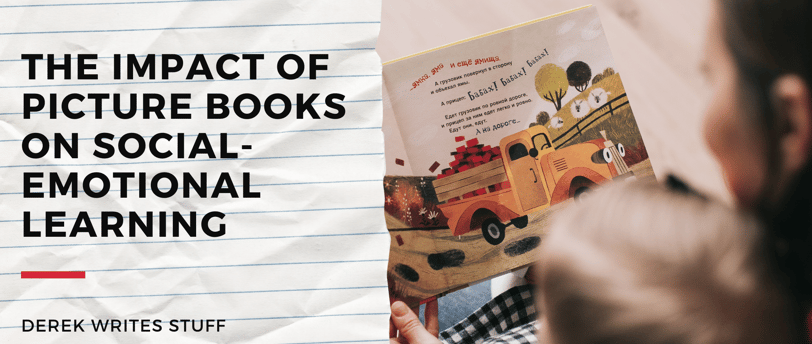The Impact of Picture Books on Social-Emotional Learning
The why and how of using picture books in SEL
11/3/20232 min read


Social-emotional learning (SEL) plays a crucial role in children's development, helping them understand and manage their emotions, build positive relationships, and develop important life skills. Picture books, with their captivating illustrations and engaging stories, can be a powerful tool in enhancing social emotional learning in children. By exploring various themes and emotions through relatable characters and situations, picture books provide a safe and accessible way for children to learn and grow emotionally. Let's delve into the benefits of using picture books for social-emotional learning and how they can support children's emotional development.
Benefits of Using Picture Books for Social-Emotional Learning
Picture books offer numerous benefits when it comes to supporting social-emotional learning in children. Firstly, they provide visual representations of emotions, helping children identify and understand their own feelings. Through the characters and storylines, picture books offer children the opportunity to explore a wide range of emotions, from joy and excitement to fear and sadness.
Additionally, picture books introduce diverse characters and situations, promoting empathy and perspective-taking. By encountering characters from different backgrounds, children can develop a greater understanding and appreciation for diversity, cultivating empathy and compassion.
Reading picture books aloud also plays a crucial role in social emotional learning. It provides an opportunity for discussions about emotions, problem-solving, and social interactions. By engaging in these conversations, children can develop their emotional intelligence, learn effective ways to navigate social situations, and develop important social skills such as kindness, empathy, and self-regulation.
Furthermore, picture books create a safe and supportive learning environment. They provide a platform for children to explore and process their own emotions and experiences, offering comfort and reassurance. Picture books can help children feel seen, heard, and understood, fostering a sense of belonging and emotional well-being.
How to Incorporate Picture Books into Social-Emotional Learning
Picture books serve as a powerful resource for teaching social emotional learning both inside and outside of the classroom. They align with the core components of SEL, including empathy, positive relationships, managing emotions, problem-solving, perseverance, and perspective-taking. By intentionally selecting picture books that address these themes, educators and parents can create meaningful learning experiences.
There are numerous picture books available that specifically teach SEL skills. For example, "The Lion & The Mouse" teaches the value of kindness and cooperation, while "When Sadness is at Your Door" explores the importance of understanding and managing emotions. These books can be used as a starting point for discussions and activities centered around social emotional learning.
Incorporating picture books like BEWARE THE GRUMBLE into SEL activities can be enhanced through adult-guided activities such as role-playing, discussion questions, and creative projects. These activities provide children with opportunities to practice and internalize the social-emotional skills presented in the books.
Additionally, resources and activities from organizations like the Anti-Defamation League and Teaching Tolerance can further foster empathy and perspective-taking. These resources offer educators and parents valuable tools to promote social emotional learning through picture books.
